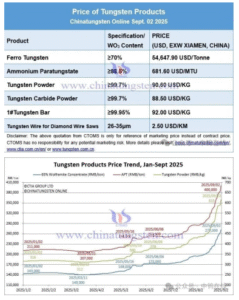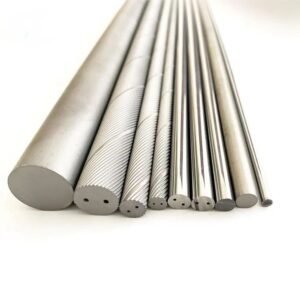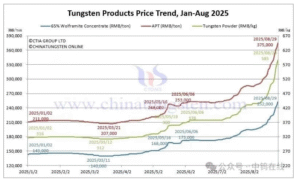The evolution of cutting tools has been a defining factor in the progress of modern manufacturing, and one of the most groundbreaking innovations in this field is the development of tungsten carbide inserts. These inserts have transformed machining operations, replacing traditional high-speed steel (HSS) tools with a solution that offers superior durability, precision, and efficiency.
By enabling faster machining speeds, longer tool life, and greater versatility, tungsten carbide inserts have revolutionized metal cutting across industries such as automotive, aerospace, and precision engineering. This article explores how these inserts have changed the industry and why they remain the preferred choice for manufacturers worldwide.
1. Exceptional Hardness and Wear Resistance
One of the primary reasons tungsten carbide inserts have replaced conventional cutting tools is their unmatched hardness and durability. Tungsten carbide, a compound of tungsten and carbon, is significantly harder than tool steels and even high-speed steel (HSS).
🔹 Comparison of Material Hardness (Mohs Scale):
- High-Speed Steel (HSS): 7-8
- Tungsten Carbide: 9
- Diamond (for reference): 10
✅ How This Revolutionizes Cutting Tools:
✔ Longer tool life – Tungsten carbide inserts last up to 10 times longer than HSS tools.
✔ Better wear resistance – Reduced tool degradation even under intense cutting conditions.
✔ Higher efficiency – Less downtime for tool changes, leading to improved productivity.
Because of their hardness, carbide inserts can cut through tough materials like stainless steel, titanium, and hardened alloys with ease.
2. High Heat Resistance – Enabling High-Speed Machining
Machining generates significant heat due to friction, and traditional cutting tools tend to soften at high temperatures, reducing efficiency. Tungsten carbide, however, maintains its hardness and structural integrity even at extreme temperatures, allowing for high-speed machining without performance loss.
🔹 Operating Temperature Limits:
- HSS Tools: Up to 600°C (1,112°F)
- Tungsten Carbide Inserts: Above 1,000°C (1,832°F)
✅ How This Revolutionizes Cutting Tools:
✔ Enables high-speed machining, reducing production time.
✔ Prevents tool deformation, maintaining cutting precision.
✔ Allows dry machining, reducing the need for coolant and lowering costs.
This advancement has made carbide inserts the go-to choice for high-performance industries where speed, efficiency, and precision are critical.
3. Modular Design – Cost-Effective and Convenient
Before carbide inserts, cutting tools were often made from solid steel, meaning the entire tool had to be replaced once worn out. Tungsten carbide inserts introduced a modular approach, where only the cutting edge (insert) is replaced, rather than the entire tool holder.
✅ How This Revolutionizes Cutting Tools:
✔ Reduces tooling costs – Manufacturers only replace the inserts, not the entire tool.
✔ Increases flexibility – Different inserts can be used for various materials.
✔ Simplifies maintenance – Quick insert replacement minimizes machine downtime.
This design innovation has made machining more efficient and economical, especially in high-volume production environments.
4. Advanced Coatings for Enhanced Performance
Modern tungsten carbide inserts come with high-performance coatings that further enhance their wear resistance, thermal stability, and cutting efficiency.
🔹 Common Coatings & Their Benefits:
✔ Titanium Nitride (TiN) – Improves wear resistance and reduces friction.
✔ Titanium Aluminum Nitride (TiAlN) – Offers superior heat and oxidation resistance.
✔ Aluminum Oxide (Al₂O₃) – Provides thermal insulation for high-speed machining.
✅ How This Revolutionizes Cutting Tools:
✔ Increases insert lifespan – Coated inserts can last 5–10 times longer than uncoated ones.
✔ Enhances cutting speed – Reduces friction, allowing for faster machining.
✔ Minimizes material adhesion – Prevents material buildup on the tool’s surface.
With these coatings, carbide inserts outperform traditional tools by maintaining cutting efficiency over extended use, leading to better machining results and lower overall costs.
5. Precision and Repeatability – Essential for High-Tech Industries
In industries such as aerospace, medical devices, and automotive manufacturing, precision is critical. Even the slightest deviation in dimensions can result in defective parts. Tungsten carbide inserts provide unmatched accuracy and repeatability, ensuring high-quality production.
✅ How This Revolutionizes Cutting Tools:
✔ Enables ultra-precise machining – Producing intricate components with micron-level accuracy.
✔ Reduces material waste – Ensuring consistent cutting performance with minimal errors.
✔ Improves surface finish – Producing smoother, defect-free surfaces.
This capability has made tungsten carbide inserts indispensable in precision engineering applications, where every micron matters.
6. Versatility Across Multiple Applications
Tungsten carbide inserts are not limited to one type of machining operation. They are widely used in:
🔹 Turning – CNC lathe operations for shaping metal.
🔹 Milling – High-speed milling for contouring and surface finishing.
🔹 Drilling – Precision hole-making in hard materials.
🔹 Grooving & Parting – Cutting grooves and separating components efficiently.
✅ How This Revolutionizes Cutting Tools:
✔ One material for multiple machining operations – Eliminates the need for different tool materials.
✔ Increases adaptability – A single insert type can handle various materials, from steel to superalloys.
✔ Improves machining efficiency – Reduces the need for frequent tool changes.
This versatility makes carbide inserts the ultimate solution for a broad range of industrial applications.
7. Sustainability – A Step Toward Greener Manufacturing
As industries strive for more sustainable practices, tungsten carbide inserts contribute to reducing material waste and energy consumption.
✅ How This Revolutionizes Cutting Tools:
✔ Longer tool life – Minimizes tool waste compared to disposable steel tools.
✔ Recyclable material – Used carbide inserts can be reprocessed and reused.
✔ Lower coolant consumption – Dry machining capability reduces environmental impact.
By making manufacturing more efficient and sustainable, carbide inserts align with the global push for eco-friendly production methods.
Conclusion – The Future of Cutting Tools is Tungsten Carbide
Tungsten carbide inserts have completely transformed the cutting tool industry, offering:
✅ Extreme hardness and wear resistance – Ensuring longer tool life.
✅ High heat resistance – Enabling high-speed machining.
✅ Modular design – Making tools more cost-effective and easy to maintain.
✅ Advanced coatings – Enhancing durability and performance.
✅ Precision and repeatability – Meeting the strictest machining tolerances.
✅ Versatility – Adapting to various machining operations and materials.
✅ Sustainability – Reducing waste and improving efficiency.
With continuous advancements in carbide technology and coatings, tungsten carbide inserts will continue to shape the future of precision machining, pushing industries toward higher efficiency, accuracy, and cost savings.
If you're looking for high-performance tungsten carbide inserts for your machining needs, contact us today for expert recommendations and premium cutting solutions! 🚀😊





